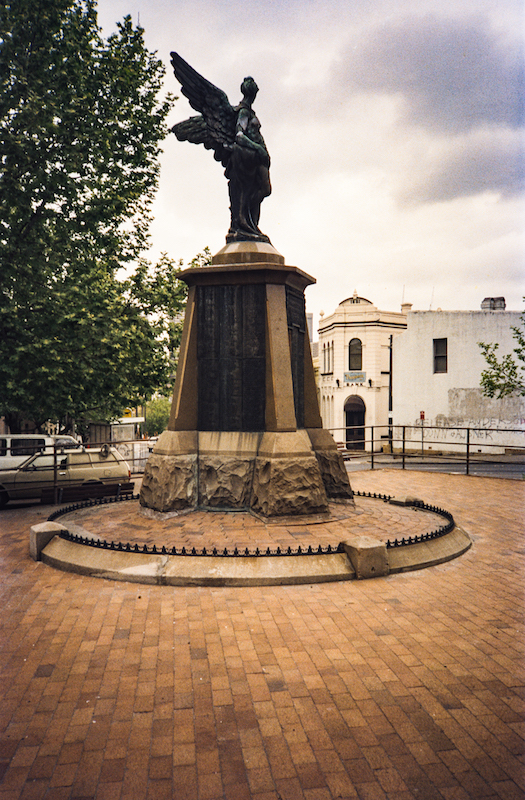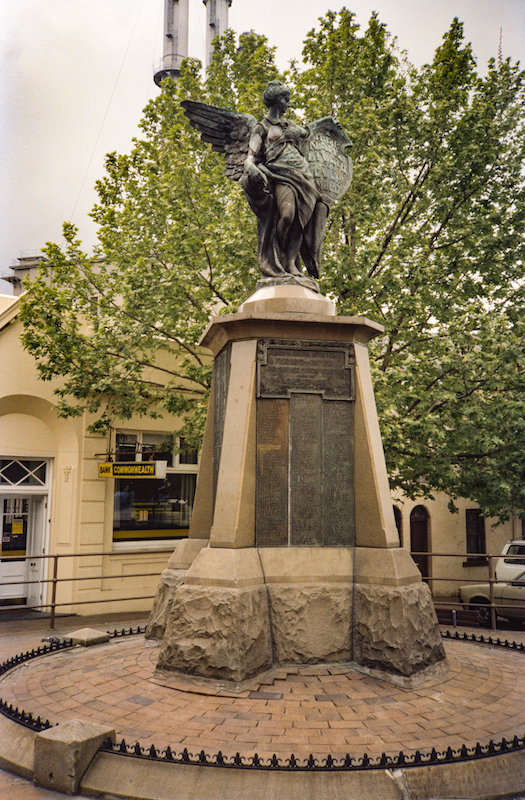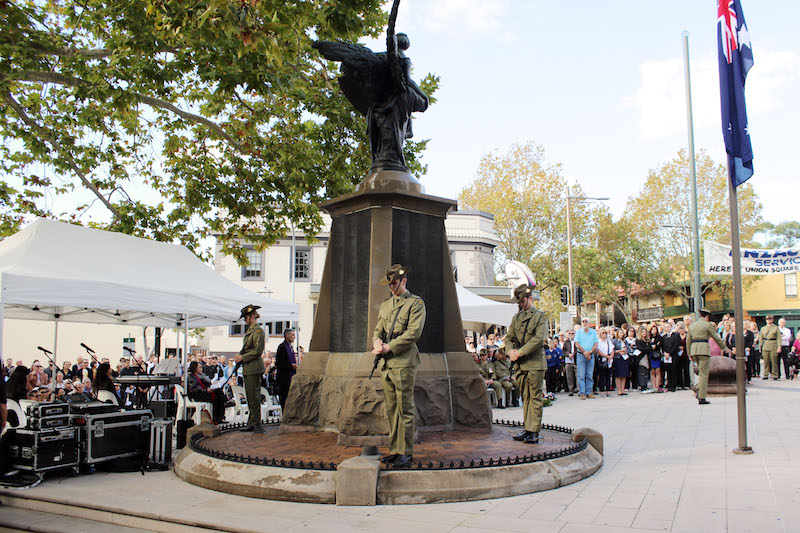Locations > Pyrmont and Ultimo War Memorial
Pyrmont and Ultimo War Memorial
The Pyrmont and Ultimo War Memorial was designed and sculpted by Gilbert Doble and unveiled in February 1922 after prolonged public subscription. The memorial, dominated by the female figure of Winged Victory in repose, commemorated the 760 men who enlisted in Pyrmont and Ultimo, 150 of whom lost their lives. There were few large donations from this poor district: most of the money – over £1000 – was collected in small coins by school children and by a house-to-house canvas. The collection even included gate money from at least one football match (in September 1919) and took five years to reach its target.
The memorial was unveiled by the Governor, Sir Walter Davidson. School children led the gathering as they sang the National Anthem (God Save The King) followed by Advance, Australia Fair. A bugler sounded The Last Post, and the assembly sang Rudyard Kipling’s Recessional. As well as the Governor, the Lord Mayor (Ald. M’Elhone) spoke, as did Rev. Madgwick (Anglican) and Father O’Connell (Catholic).
First located at the intersection of Union and Harris Streets, the memorial was moved to Union Square when Union Street was closed to through traffic.
Five years after the Union Square memorial (4 April 1927) another war memorial was unveiled at St Bartholomew’s Church, “To the glory of God and to the appreciation of the men from this parish who served in the War, 1914-19.”
As Pyrmont’s population shrivelled, ANZAC Day services at the Memorial fell into abeyance. They were revived in the 2000s, in a campaign led by Carole Twist.






